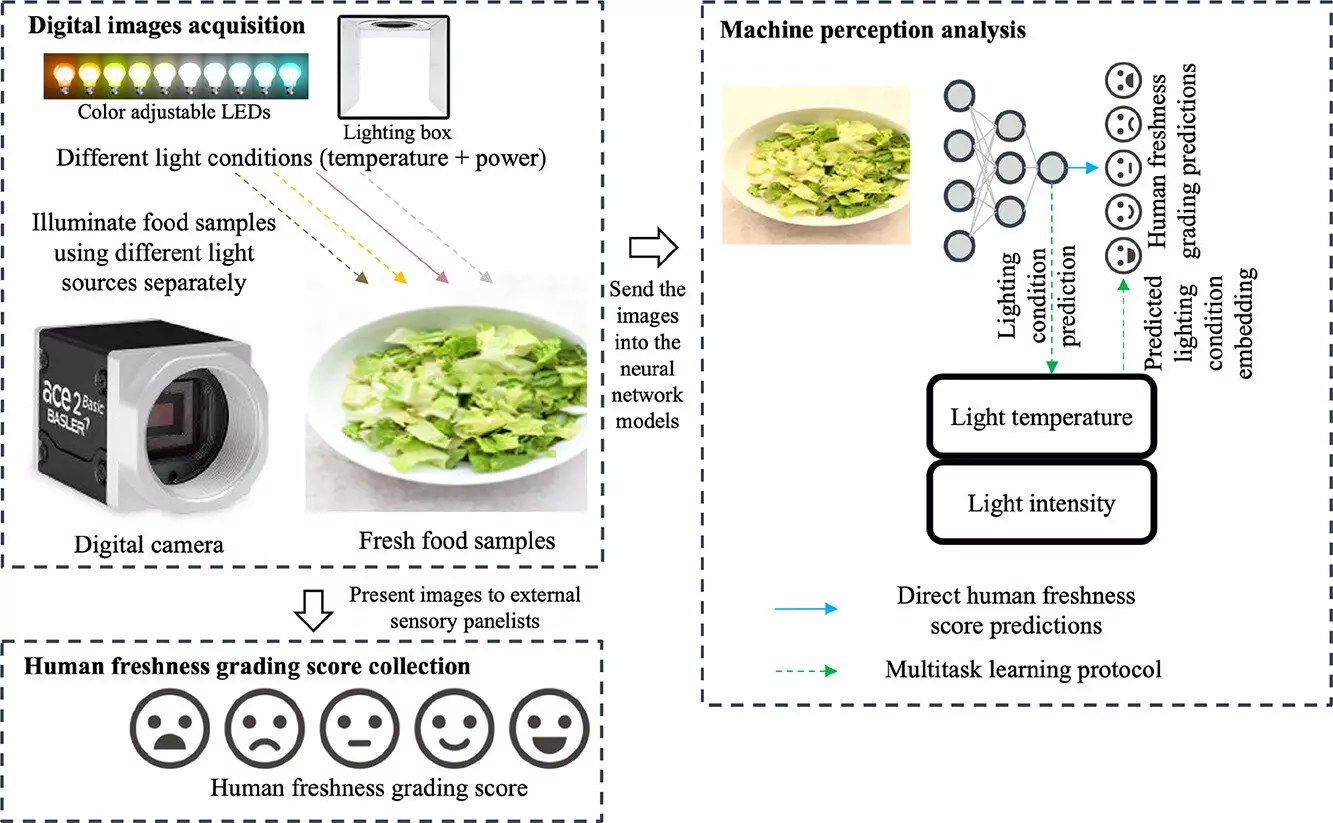Grocery shopping can often feel overwhelming, particularly when faced with a plethora of apple varieties or the latest organic produce. A common thought that might cross a shopper’s mind is whether technology could facilitate this task, perhaps with an app that helps select the freshest fruit. This query speaks to a broader ambition within agricultural research: the drive to integrate machine learning into food quality assessment. Recent findings from a study conducted at the Arkansas Agricultural Experiment Station shed light on this possibility, offering insights that could enhance how consumers and retailers perceive and present food.
Despite advancements in machine learning technologies, achieving consistency in predicting food quality remains a significant hurdle. Human intelligence, with its ability to adapt to varying environmental conditions, still often outperforms existing algorithms. The study led by Dongyi Wang, an assistant professor specializing in smart agriculture, aims to bridge this gap. Published in the Journal of Food Engineering, the research endeavors to decode how human perceptions of food quality can be harnessed to train computer models for better accuracy and reliability.
The critical finding is that machine learning models trained on data reflecting human perceptions achieve greater accuracy under fluctuating lighting conditions—an important factor in food presentation. Wang explains that the reliability of machine-learning systems hinges on understanding human assessments first. The study highlights the discrepancies in human perception, indicating that by teaching machines to adapt to these variances, one can significantly increase their predictive reliability.
The study’s methodology involved meticulously analyzing human perceptions through a sensory evaluation panel. Participants, screened for any visual impairments or color blindness, evaluated the freshness of Romaine lettuce images under varying lighting conditions over five days. Each participant assessed 75 images daily, providing a rich dataset of subjective evaluations. With a diverse pool of 109 participants, the research amassed data that reflects a broad spectrum of human perception, demonstrating the complexities at play in food quality assessment.
Lettuce was specifically chosen because its freshness can visibly degrade, making it an ideal candidate for studying color variations and browning under different illumination conditions. A vital part of the experiment involved capturing 675 images of the same lettuce over eight days, showcasing a variety of browning levels, and documenting how the lighting’s brightness and hue impacted participants’ assessments.
Machine Learning and Food Quality: Building the Link
The focus on human-derived data in training machine-learning models brings about a potential paradigm shift in food quality assessment. Traditional machine vision techniques often overlook the subtleties of how lighting affects human perception. In this study, the researchers implemented various neural network models to analyze the images and predict average human grading. The results were promising, showing a substantial reduction in prediction errors—about 20%—when compared to models that ignored the intricacies of human perception.
This advancement suggests that integrating human insights into machine learning can train systems to consider factors that would have been previously neglected. The ultimate goal is to develop more reliable machine vision systems that can accurately interpret food quality, thereby enhancing various industries from food packaging to retail display.
The implications of this research extend beyond assessing food quality. The methodology developed could have applications in numerous fields, including the evaluation of luxury goods, such as jewelry. Wang suggests that the same principles could apply to any scenario where human perception is critical for quality determination.
As the integration of machine learning into everyday scenarios continues to grow, the ongoing research into human perception’s role is vital. By employing technology in tandem with a deep understanding of human behavior and environmental effects, future systems can become more efficient at meeting consumer needs.
As the interplay between technology and agriculture advances, the ability to accurately assess food quality will become increasingly vital. With the ongoing research emerging from the Arkansas Agricultural Experiment Station, the dream of a helpful shopping app that guides consumers in their purchasing decisions could soon be a reality. By cultivating a seamless synergy between human insights and machine learning, the future of food quality assessment looks promising—innovative, efficient, and more attuned to consumer preferences than ever before.


Leave a Reply